
Last week, I took you on a memory trip to Saint-Malo and Dol-de-Bretagne.
In the summer of 2010, @iamyohann and I borrowed the old family car to spend more than a week-long road trip around Northern France. No pre-booked accommodations and no fixed itinerary. Just the two of us and a folding map.
After stuffing ourselves with a heavy viennoiserie breakfast, we left the chambre d'hotes in Le Vivier Sur Mer that morning. Our plan was to make it to Lille before sundown. That would mean a 537 kilometer drive, roughly around 6 hours. It made the trip a bit longer since we avoided major highways, thus saving money on toll fees.
While exploring the Celtic region of French Brittany, it'll be a sin to pass up an opportunity to visit Mont-Saint-Michel. We made a detour to the iconic site on the way.

Mont Saint-Michel
Mont Saint-Michel known as "Wonder of the West" is a UNESCO World Heritage site, one of the first monuments to obtain this recognition. It is nestled on a fortified islet on vast sandbanks bordering the regions of Brittany and Normandy. This Gothic-style Benedictine abbey was built between 11th and 16th centuries on a sanctuary dedicated to Archangel Michael.
Around 2.5 million visitors from different parts of the world come to admire this marvel each year. It's a perfect marriage between a nature site and architecture.
The entrance through the main gate is free, but there is a small entrance fee to visit the Abbey.
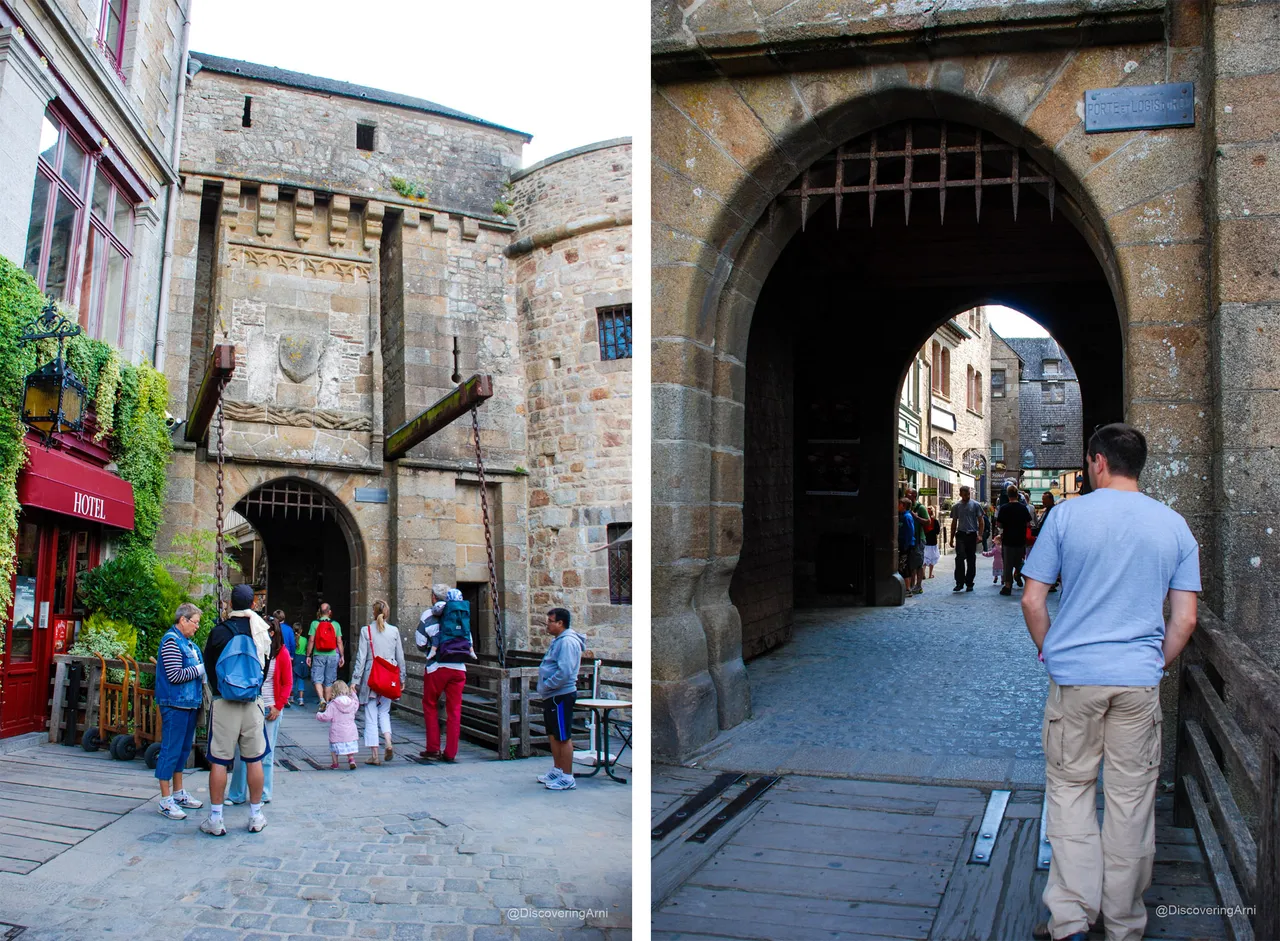


Various bar & restaurants, shops, and museums in the village.
Ever Changing Tides and its Connection to the Main Land
The rocky islet of Mont Saint-Michel is 600 metres away from the main land. During the time of our visit, it could only be accessed through the raised causeway connection.
When sea levels rise during high tide, the surrounding land including the parking area that you see here are covered. We were lucky to have visited Mont St. Michel during low tide since we were able to park the car at the causeway parking and see the island from a different vantage point.
 You can clearly see here where @iamyohann's interests lie. Not on the world heritage site but on these motorbikes.
You can clearly see here where @iamyohann's interests lie. Not on the world heritage site but on these motorbikes.

Us photobombing the former concrete causeway and old low tide parking area.

There were strict timings for the parking and it was closely monitored by men in orange vests to ensure no cars were parked there when the tide changed. These pictures were taken in 2010 right before the new bridge was built. The former concrete causeway blocked the water from flowing freely.

In 2014 with the help of a huge project named Projet Mont Saint Michel, the raised causeway and the visitor car park that you see in my photos were removed and replaced by a new modern bridge designed by Architect Dietmar Feichtinger.
The new bridge made it possible for water to flow naturally while providing the public an easy access. The project also restored this marvel into becoming an island once again by building a new hydraulic dam that used Couesnon River water into removing the accumulated silt around its base.

The Village and the Bay
The island is an actual village with real residents. This includes the monks and nuns that live in the abbey and monastery. It is best explored on foot.
We spent the whole morning here. We skipped visiting the interior of the abbey due to the presence of a long queue of patient tourists. We took the time to stroll within the village and along the ramparts. Visit Terrasse de l'ouest for the panoramic views of the bay (Left photo below).
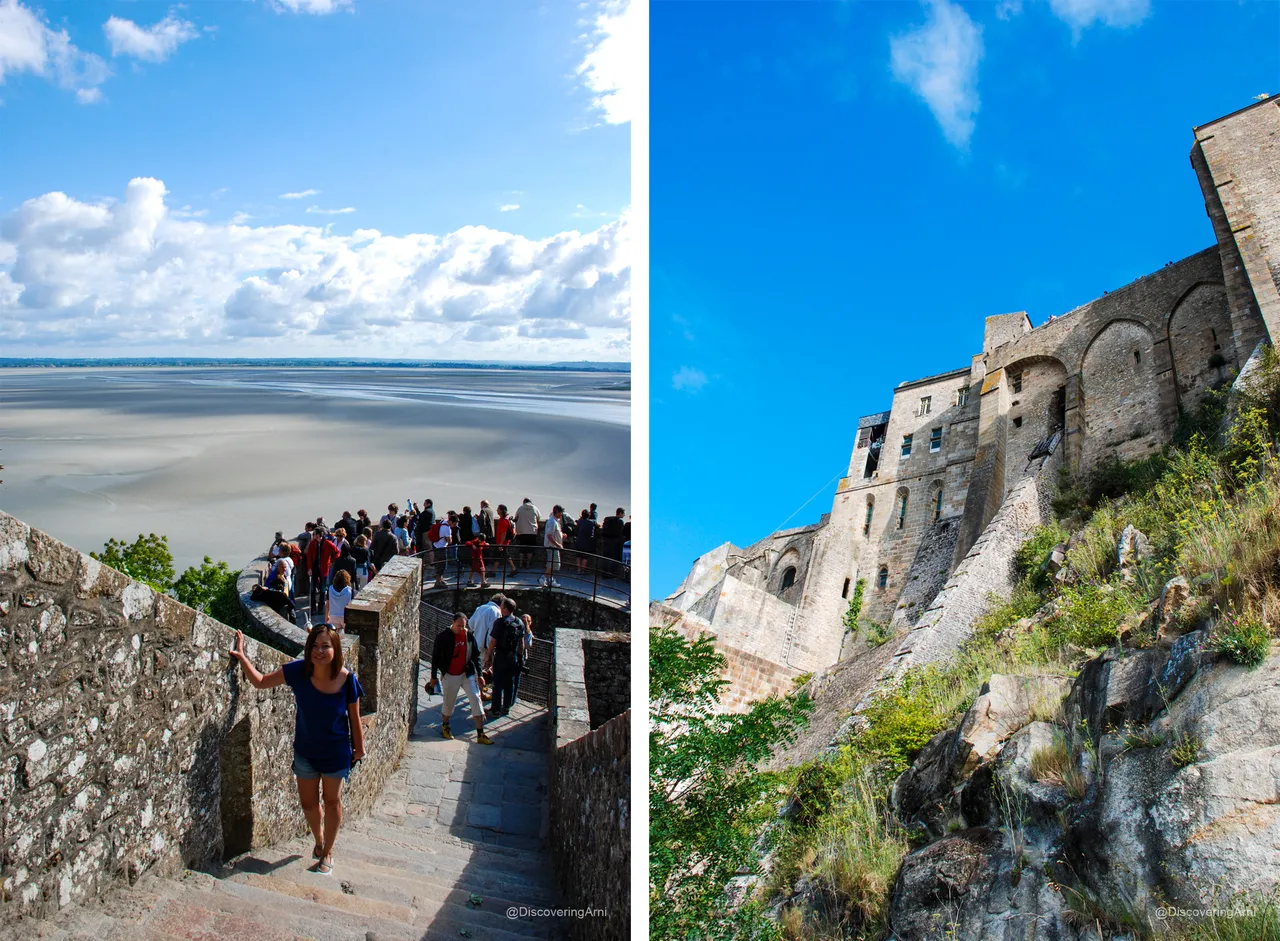
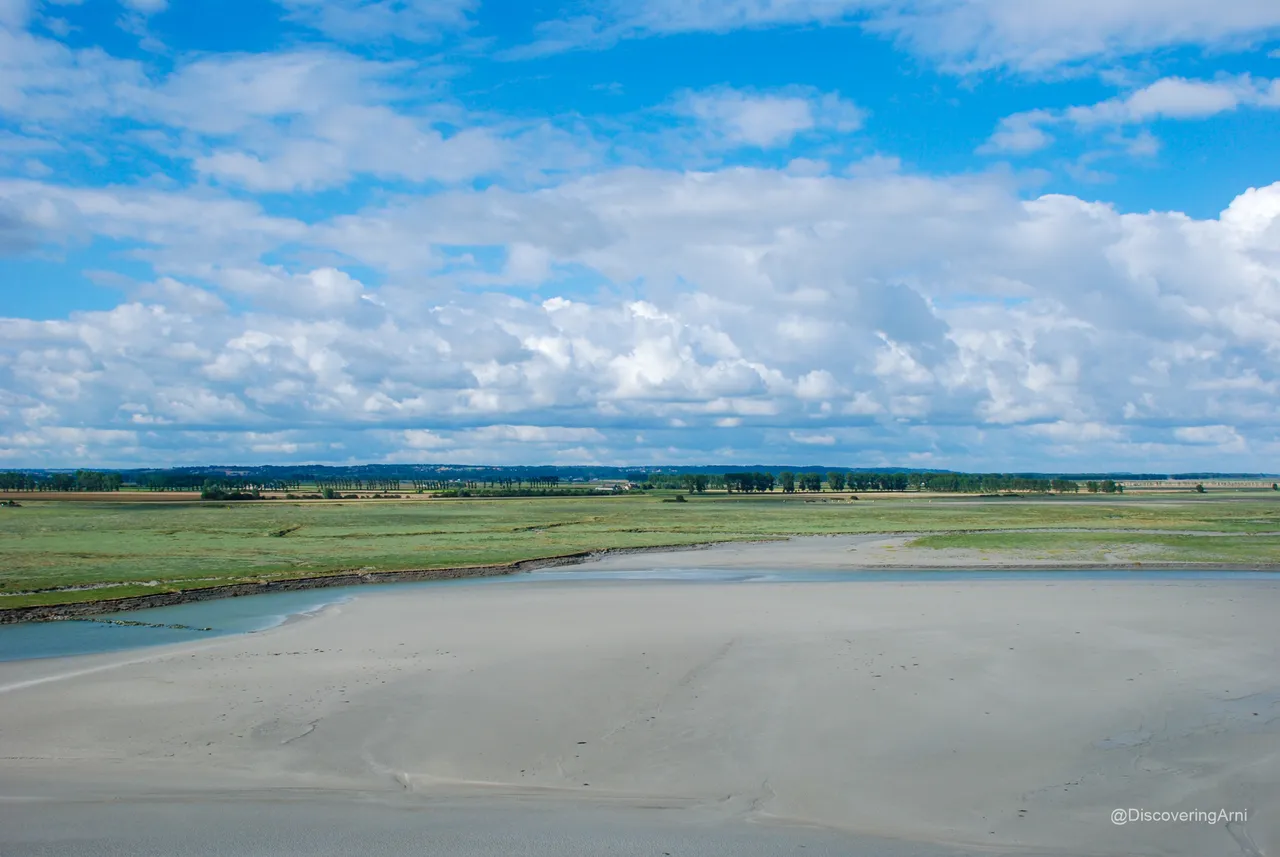
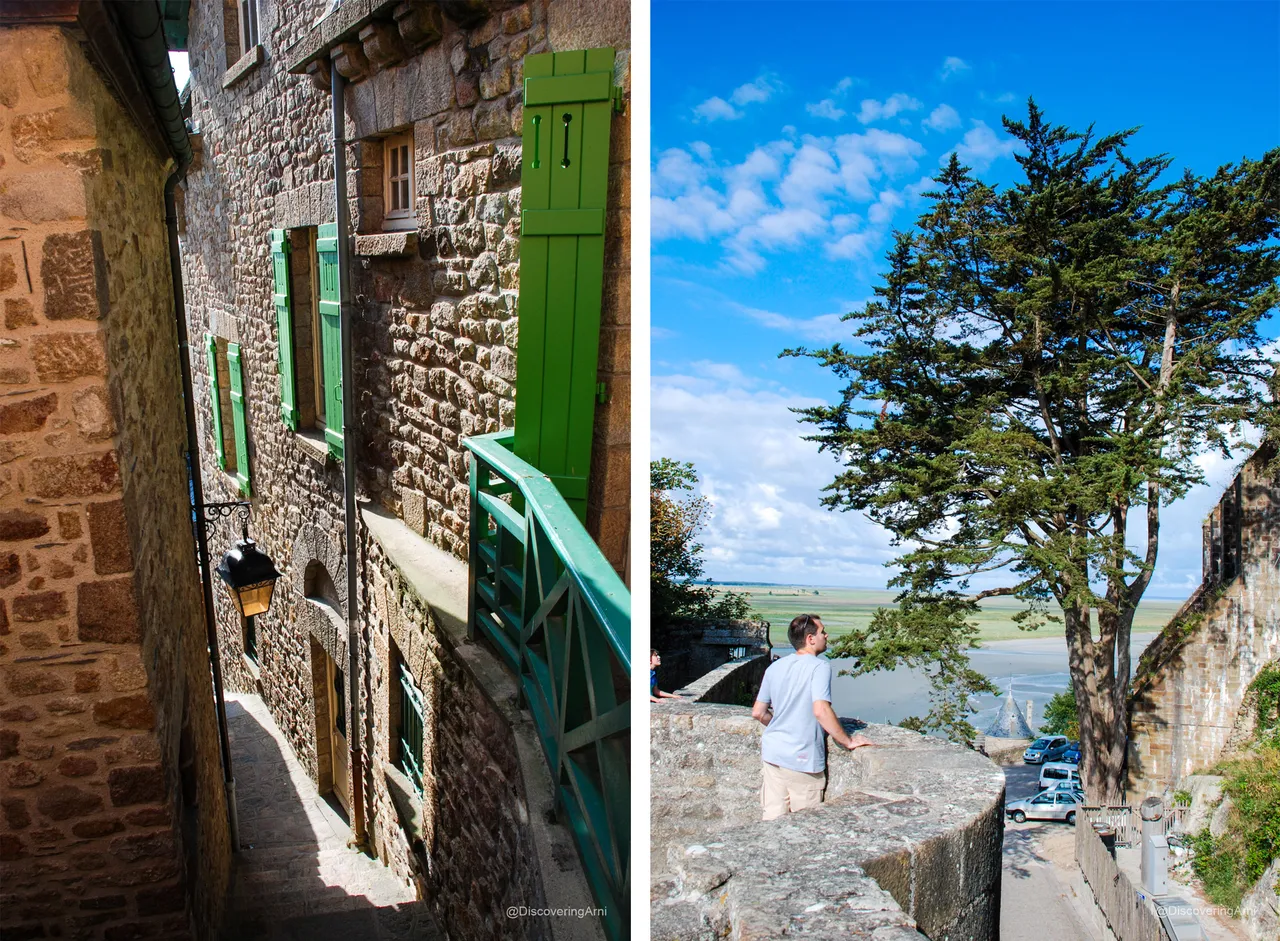
My Takeaway
We got lost in small alleys and enjoyed the leisurely stroll. The heavy breakfast before coming here proved to be a wise decision. We found their meal prices to be expensive. The most well-known culinary spot is La Mère Poulard known for its special omelette but we only got a whiff and a peek into this restaurant back then.
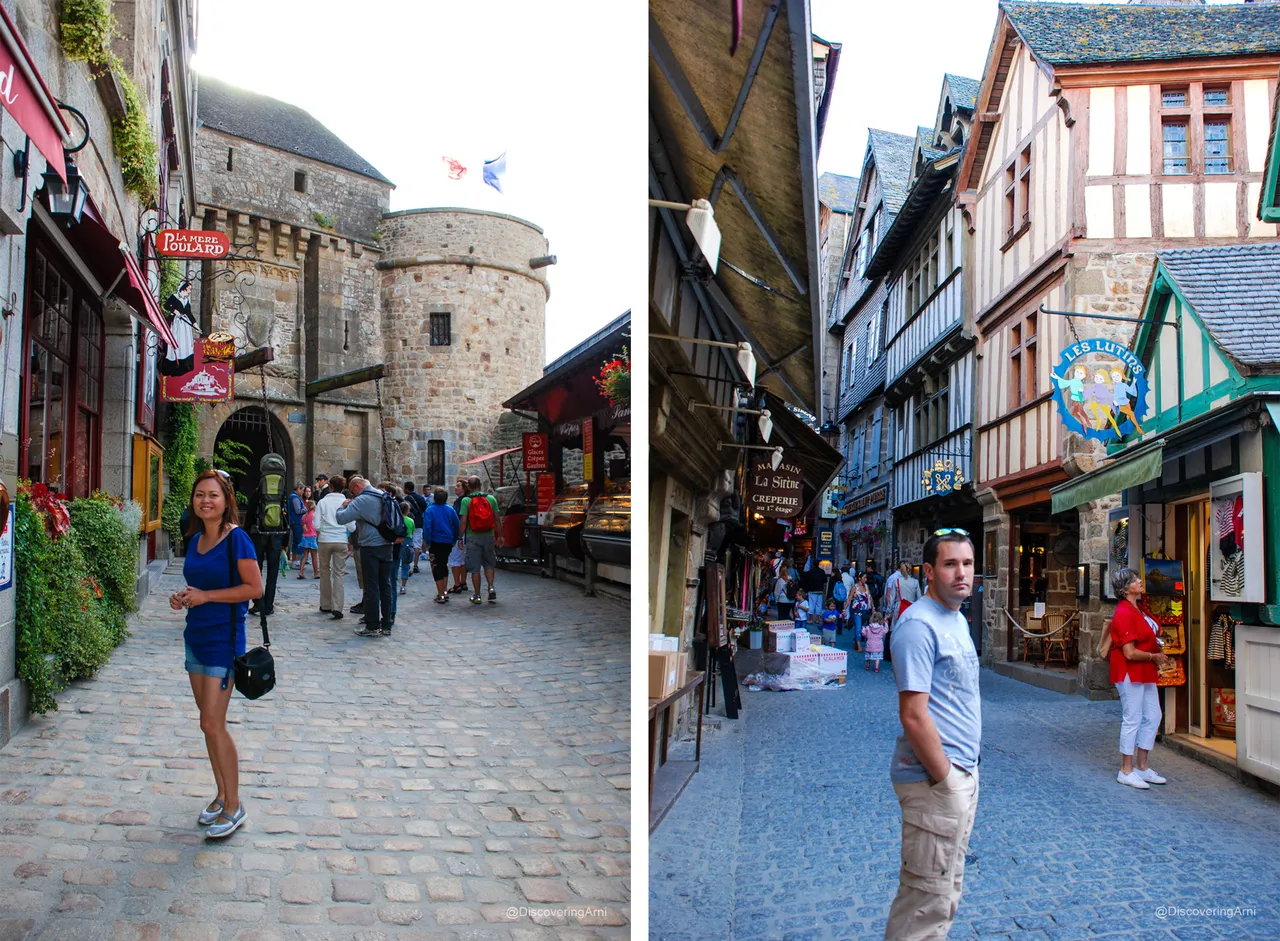
Posing just outside La Mère Poulard near the gate. Crêpes are popular as well.
We paid close attention to the visiting schedule, because the opening hours of the monument depended on the tidal conditions.
If you have more time, spend a full day even an overnight stay in Mont St. Michel. Being able to see the tide changes and how it affects the structure is an interesting part of the tour. Moreover, this would ensure that you make the most out of every nook and corner of this historical gem.

@leaky20 wrote an interesting Mont Saint-Michel post about his recent visit in case you are curious to see the new bridge and read about his current experience in this world heritage site.
Thank you for reading. If you haven't read the first part of the French Brittany series yet, this might be of interest to you:
Road Trip Postcard: French Brittany (Part 1) Saint-Malo and Beyond
References:
Mont-Saint-Michel and Its Bay - Unesco.org
Mont Saint-Michel Wikipedia
Euro News: Mont Saint Michel reclaims island-like character after years of major construction by Alfie Tobutt & Aurora Velez
